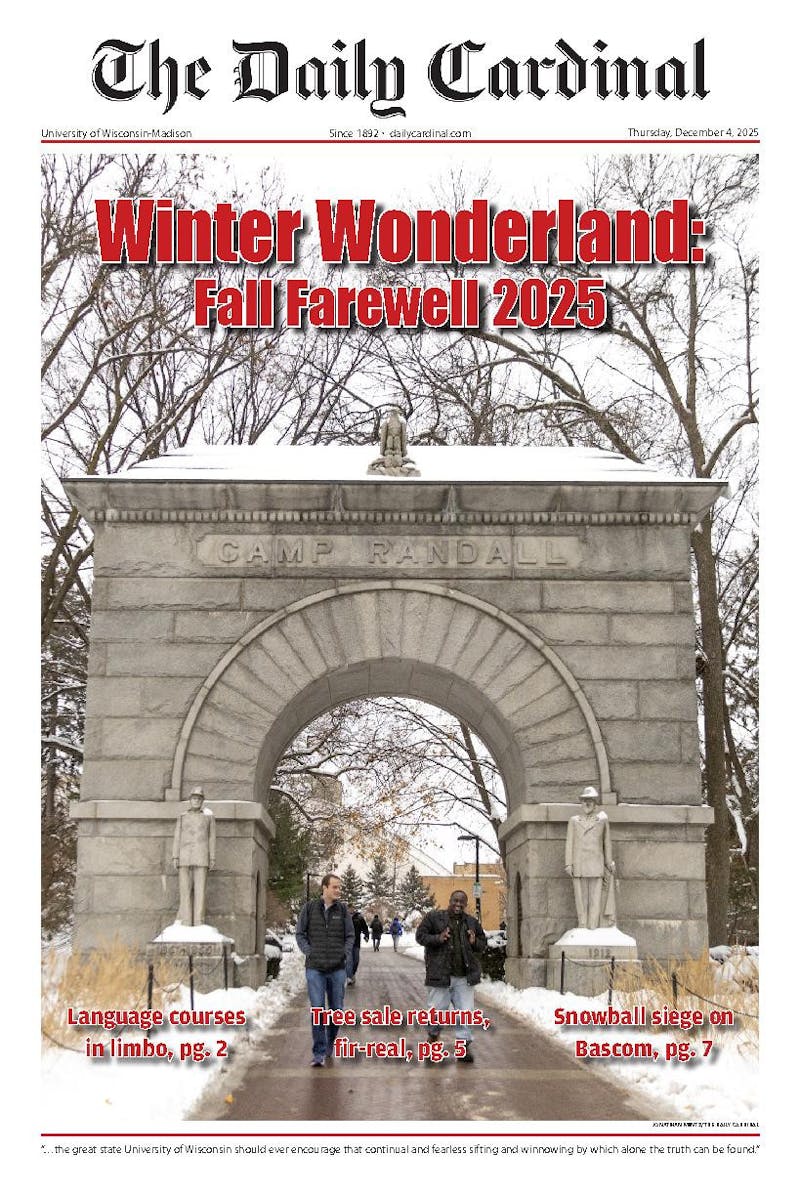The Yahara River watershed and Dane County's other lakes create the lifeblood for farmers, residents and Wisconsinites. With increasing threats such as runoff and pollution amplified by climate change, local partners have taken steps to keep Dane County’s lakes clean, preserving the valuable resource they offer.
On Sept. 9, organizers from local environmental nonprofits, UW researchers and Madison officials spoke during the Capital Times Idea Fest virtual panel to explore challenges to Dane County’s lakes such as nutrient pollution and salinization and discuss potential solutions.
“Here in Dane County our lakes are really strongly shaped by the water and the land that drain into them,” Hilary Dugan, an associate professor at the UW-Madison Center for Limnology, said. “Over the last 150 years, we've seen them transform from these clear water, sandy bottom lakes to what we refer to as eutrophic lakes, lakes that have basically too much algal biomass.”
Dugan, who’s extensively studied how climate change has exacerbated environmental consequences in lakes, noted that one of the biggest stressors facing the lakes was nutrient pollution, specifically phosphorus and nitrogen.
Fertilizers, manure and soil erode into lakes during big storms, which cause algal blooms which pose severe health risks and can reduce water clarity. Dugan said when climate change is factored in, this process can accelerate, overwhelming the existing buffers and causing poor water quality during summertime.
Another challenge mentioned was the presence of road salt during long Madison winters, used to keep roads safe with ice and snow cover. Dugan said that many Wisconsin species aren’t adapted to saltwater. As a result, increased salinity in water could be toxic to aquatic invertebrates, which comprise the basis of the food chain.
In response, Wisconsin Salt Wise, an organization dedicated to decreasing salt usage, worked with Madison officials and other private partners to reduce the amount of salt distributed on roads without compromising safety. Dugan said the city’s salt use numbers have dropped in recent years, both decreasing total usage and switching to a liquid brine instead of rock salt.
Other local nonprofits including the Clean Lakes Alliance work on advocacy regarding nutrient pollution.
James Tye, the Executive Director of the Clean Lakes Alliance, spoke to the economic purpose and importance of the Dane County lakes during the panel. Tye explained the lakes bring $220 million a year in economic value into the community, primarily through the county’s beaches.
Laura Hicklin, the third member of the panel and director of the Dane County Land and Water Resources Department, explained an ongoing project called Dane Demo Farms, a network and collective of farmers working together to improve water quality and soil health in Dane County.
Dane Demo Farms ran numerous projects with local farmers, providing information on how to plant, manage and remove cover crops, researching more effective ways to apply manure and helping install buffers along wetlands and farmlands. Additionally, rural land owners can help in the effort by planting cover year round, and Dane County is working to provide incentives for farmers and landowners with spending limits.
“In Dane County, we have a lot of rural land owners that rent to farmers,” Hicklin said. “We want to provide an incentive for them to participate in this program to increase water infiltration, reduce soil erosion, improve water quality, build soil health, increase wildlife habitat, sequester carbon and diversify production practices.”
She said the county has also been working one-on-one with farmers, helping share best practices for water conservation and preserving soil health. These programs and subsidies can help maintain the farm's lasting impact while also protecting the county’s natural resources.
“We can hopefully help [farmers] purchase new equipment through the soil health equipment program and we can get them involved in Dane Demo Farms so that they continue to learn and grow over time,” Hicklin said.
Dane County and the Clean Lakes Alliance also partnered to restore the Pheasant Branch Conservancy in Middleton. Purchased by the county in 2019, the conservancy is adjacent to other public lands, and according to Hicklin, serves as a buffer between Middleton’s urban, suburban and farming areas. The Clean Lakes Alliance and Friends of Pheasant Branch Conservancy collaborated during the wetland restoration and now are undertaking a “platinum prairie restoration,” as coined by Hicklin.
“We wanted to make sure that the prairie that was restored was particularly diverse, so we have over 75 plant species located in this prairie,” Hicklin said. “It's going to serve as a seed bank for other restoration projects.”
Through this collaboration, Tye and other leaders have been able to host weekly volunteer workdays at Pheasant Branch to bring the community into the restoration project.
“We need to be in touch with our land because everything that ends up on the land can end up in the lakes,” Tye said. “[We’re] really thankful for Dane County realizing the importance of volunteerism and really nurturing that to let more people get involved.”
For homeowners, Tye said the effort could be as simple as keeping curbs and gutters free of leaves in the fall to prevent any extra phosphorus from seeping into the lake. Dugan said that sitting in on UW classes or getting involved with workshops or volunteering could be another way for community members to get involved. The fight for clean lake water will be ongoing.
“I think we all think that this is a really modern problem. But we've had poor water quality for a long time in these lakes and they are not the worst that they've ever been,” Dugan said. “I think it comes down to [water] monitoring, which then instills confidence… I think Madison's the type of community that should get behind that.”
John Ernst is the features editor for The Daily Cardinal. He has written in-depth on refugee resettlement, Milwaukee Public Schools and rural issues, including water contamination and immigrant farming. He also reported for the campus news, science and sports desks.






